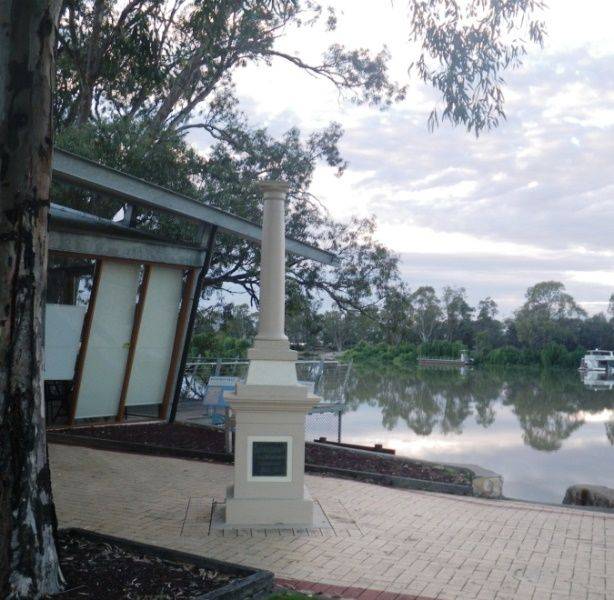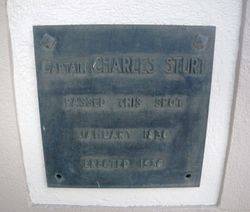
Home » Themes » People » Exploration
Captain Charles SturtPrint Page 
The monument commemorates explorer Captain Charles Sturt. It was unveiled in 1930 to commemorate Sturt's centenary of exploration.
In 1828 he discovered the Darling River and in January 1830 the Murray River, which he followed until he reached present day Goolwa. With the assistance of the local Aborigines, Sturt and his party were able to reach the Murray mouth in South Australia.
He was unable to get his boat out into the sea and had to walk across the dunes to see the river flowing into the ocean. However Sturt had seen enough good land and it was his report of this journey that later influenced the decision in England to establish the Colony of South Australia.
An itinerary for the unveiling of memorials erected in connection with the Sturt centenary, arrangements in regard to which are being made under the auspices of the South Australian branch of the Royal Geographical Society has been fixed as follows:—Renmark, Wednesday afternoon, January 15: Berri, Thursday morning; Loxton, noon, Thursday; and Barmera, Thursday afternoon; Waikerie, Friday morning: and Morgan, Friday afternoon; Mannum, Saturday morning and Murray Bridge, Saturday afternoon; Hindmarsh Island, Sunday afternoon. At each centre a memorial cairn will be unveiled by the Chief Justice (Sir George Murray). The trip is to be made from Renmark to Morgan by motors, and from Morgan to Goolwa by steamer. Committees in New South Wales and Victoria are co-operating in the proceedings.
The Advertiser (Adelaide, SA), 17 October 1929.
Location
| Address: | Riverview Drive, Berri Information Centre , Berri, 5343 |
|---|---|
| State: | SA |
| Area: | AUS |
| GPS Coordinates: | Lat: -34.287744 Long: 140.602904 Note: GPS Coordinates are approximate. |
Details
| Monument Type: | Monument |
|---|---|
| Monument Theme: | People |
| Sub-Theme: | Exploration |
| Link: | http://adb.anu.edu.au/ |
Dedication
| Actual Monument Dedication Date: | Thursday 16th January, 1930 |
|---|
Captain CHARLES STURT
Passed This Spot
January 1830
Erected 1930






